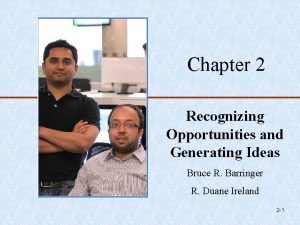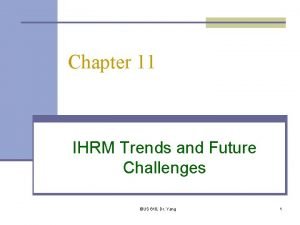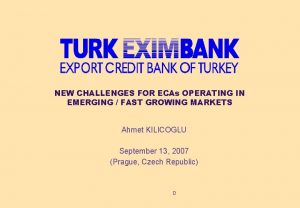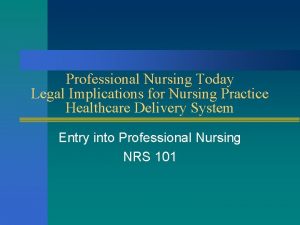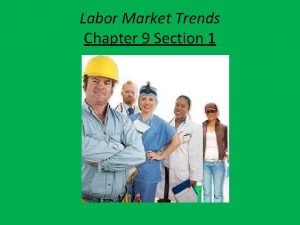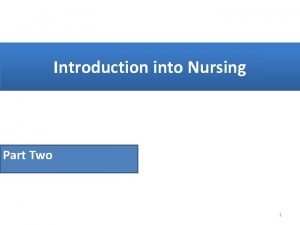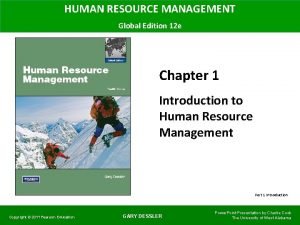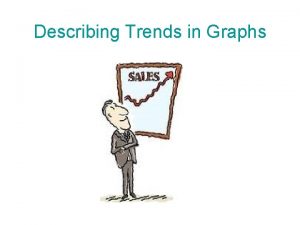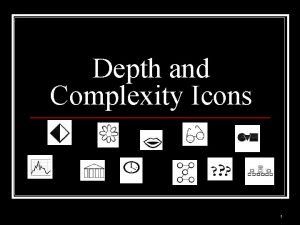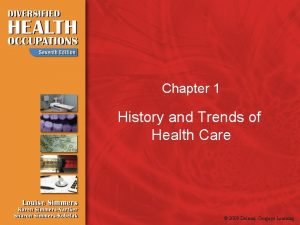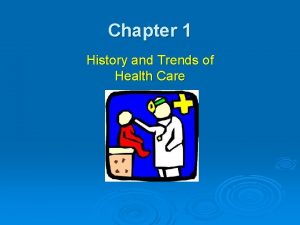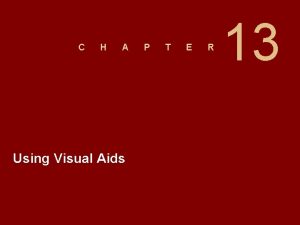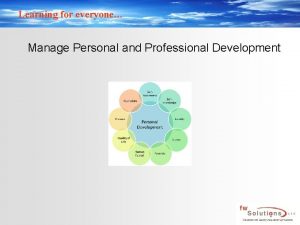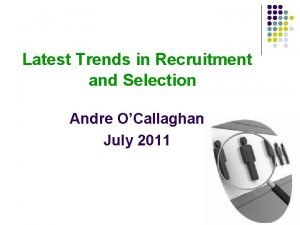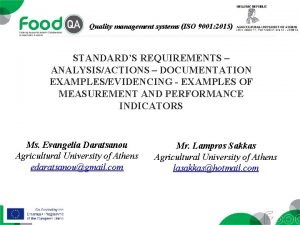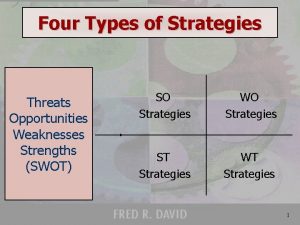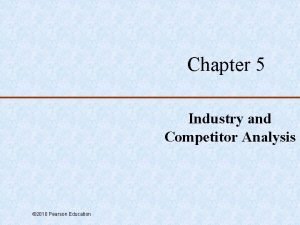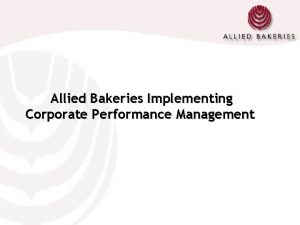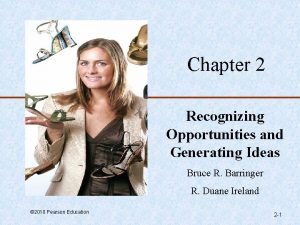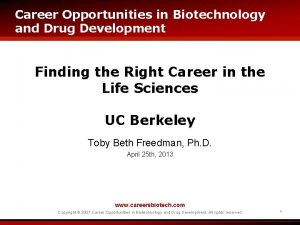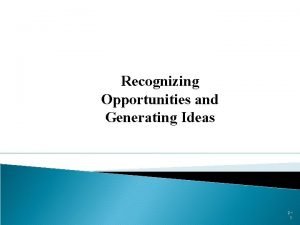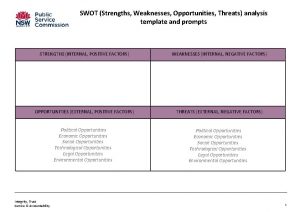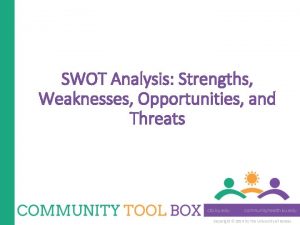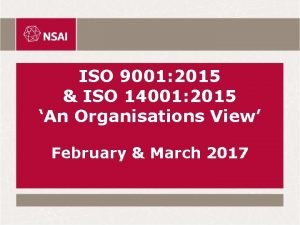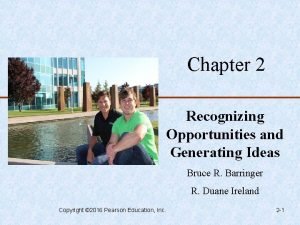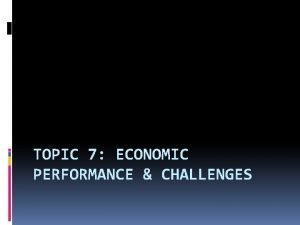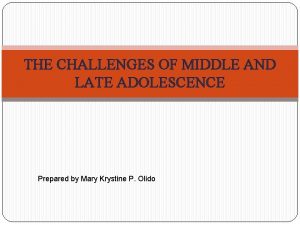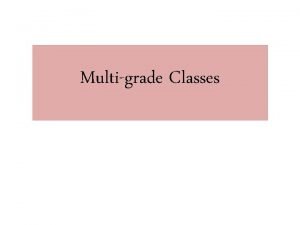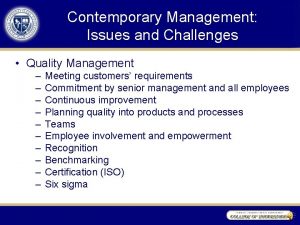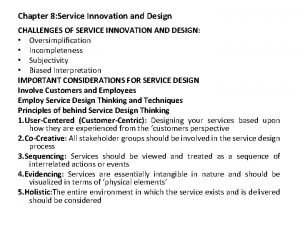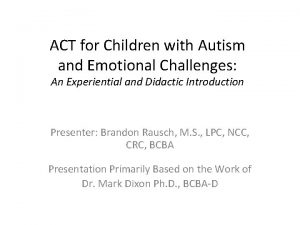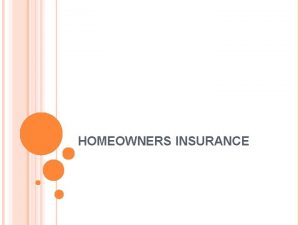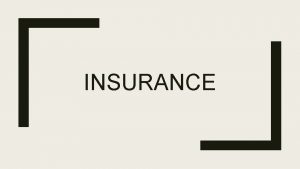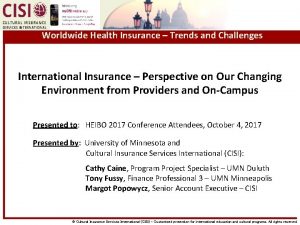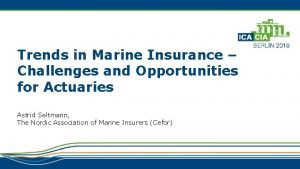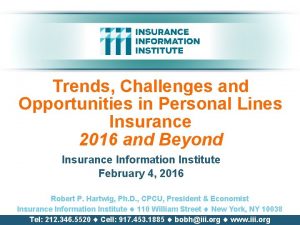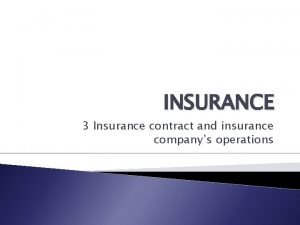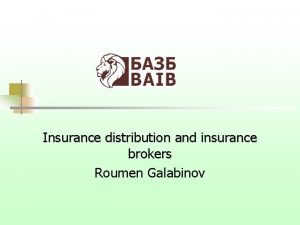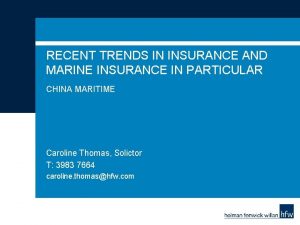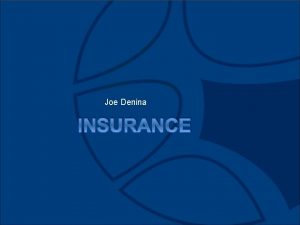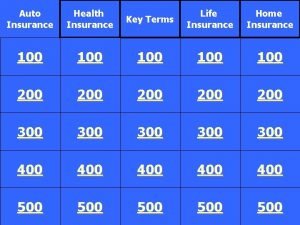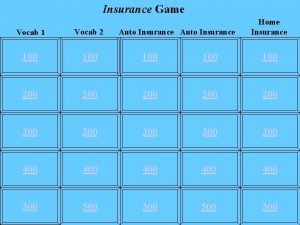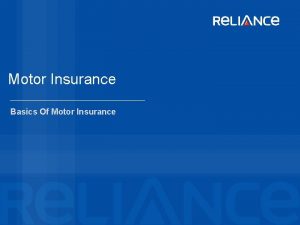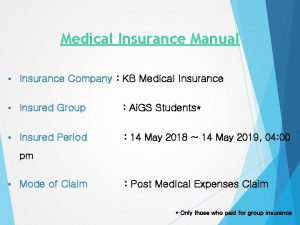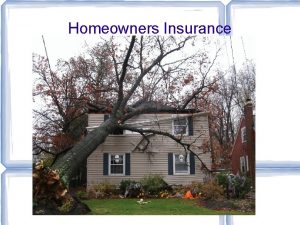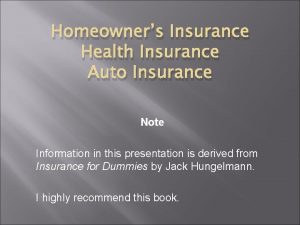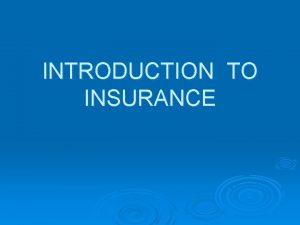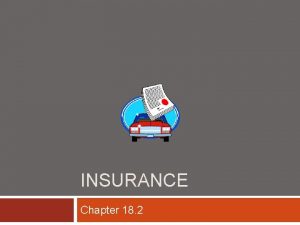Trends Challenges and Opportunities in the PC Insurance



























































































- Slides: 91

Trends, Challenges and Opportunities in the P/C Insurance Industry in 2016 & Beyond NAMIC Management Conference Hilton Head, SC June 27, 2016 Download at www. iii. org/presentations Robert P. Hartwig, Ph. D. , CPCU, President & Economist Insurance Information Institute 110 William Street New York, NY 10038 Tel: 212. 346. 5520 Cell: 917. 453. 1885 bobh@iii. org www. iii. org

P/C Industry Net Income After Taxes 1991– 2016: Q 1 $ Millions n n n 2005 ROE*= 9. 6% 2006 ROE = 12. 7% 2007 ROE = 10. 9% 2008 ROE = 0. 1% 2009 ROE = 5. 0% 2010 ROE = 6. 6% 2011 ROAS 1 = 3. 5% 2012 ROAS 1 = 5. 9% 2013 ROAS 1 = 10. 2% 2014 ROAS 1 = 8. 4% 2015 ROAS = 8. 4% Net income in Q 1: 2016 on an annualized basis was on track to match full-year 2015 • ROE figures are GAAP; 1 Return on avg. surplus. Excluding Mortgage & Financial Guaranty insurers yields a 8. 2% ROAS in 2014, 9. 8% ROAS in 2013, 6. 2% ROAS in 2012, 4. 7% ROAS for 2011, 7. 6% for 2010 and 7. 4% for 2009; 2015 E is annualized figure based actual figure through Q 3 of $44. 0 Sources: A. M. Best, ISO; Insurance Information Institute

Profitability Peaks & Troughs in the P/C Insurance Industry, 1975 – 2015 ROE 1977: 19. 0% History suggests next ROE peak will be in 2016 -2017 1987: 17. 3% 10 Year 1997: 11. 6% s 10 Ye ars 9 Years 2006: 12. 7% 2013 9. 8% 2015: 8. 4% 2014 8. 4% 1975: 2. 4% 1984: 1. 8% 1992: 4. 5% 2001: -1. 2% *Profitability = P/C insurer ROEs. 2011 -15 figures are estimates based on ROAS data. Note: Data for 2008 -2014 exclude mortgage and financial guaranty insurers. Source: Insurance Information Institute; NAIC, ISO, A. M. Best, Conning

ROE: Property/Casualty Insurance by Major Event, 1987– 2015 (Percent) P/C Profitability Is Both by Cyclicality and Ordinary Volatility Modestly higher CATs Katrina, Rita, Wilma Low CATs Sept. 11 Hugo Andrew, Iniki Lowest CAT Losses in 15 Years Northridge * Excludes Mortgage & Financial Guarantee in 2008 – 2014. Sources: ISO, Fortune; Insurance Information Institute. 4 Hurricanes Financial Crisis* Sandy Record Tornado Losses 4

P/C Insurance Industry ROE: Magnitude of Cyclicality, Volatility Changes Over Time, 1950 -2015 1950 - 1970 Low Volatility . Source: Insurance Information Institute 1971 - 1992 Extreme Volatility 1993 - 2008 Moderate Volatility 2009 - Present Modest Volatility

P/C Insurance Industry Combined Ratio, 2001– 2016: Q 1* As Recently as 2001, Insurers Paid Out Nearly $1. 16 for Every $1 in Earned Premiums Heavy Use of Reinsurance Lowered Net Losses Relatively Low CAT Losses, Reserve Releases Best Combined Ratio Since 1949 (87. 6) Relatively Low CAT Losses, Reserve Releases Avg. CAT Losses, More Reserve Releases Cyclical Deterioration Higher CAT Losses, Shrinking Reserve Releases, Toll of Soft Market Sandy Impacts Lower CAT Losses 3 Consecutive Years of U/W Profits: First Time Since 1971 -73 Elevated CATs * Excludes Mortgage & Financial Guaranty insurers 2008 --2014. Including M&FG, 2008=105. 1, 2009=100. 7, 2010=102. 4, 2011=108. 1; 2012: =103. 2; 2013: = 96. 1; 2014: = 97. 0. Sources: A. M. Best, ISO (2014 -2015); Figure for 2010 -2013 is from A. M. Best P&C Review and Preview, Feb. 16, 2016. 6

NPW Premium Growth: Peaks & Troughs in the P/C Insurance Industry, 1926 – 2015 ROE Post WW II Peak: 1947: 26. 2% Start of WW II 1941: 15. 8% 1970 -90: Peak premium growth was much higher in this period while troughs were comparable. Rapid inflation, economic volatility, high interest rates, tort environment all played roles Economic Shocks, Inflation: 1976: 22. 0% Tort Crisis 1985/86: 22. 2% 1988 -2000: Period of inter-cycle stability 1950 -70: Extended period of stability in growth and profitability. Low interest rates, low inflation, “Bureau” rate regulation all played a role Great Depression 1932: -15. 9% max drop Twin Recessions; Interest Rate Hikes 1987: 3. 7% Note: Data through 1934 are based on stock companies only. Data include state funds beginning in 1998. Source: A. M. Best; Insurance Information Institute. Post-9/11 2002: 15. 3% 2015 3. 4% 201020 XX? Post -recession period of stable growth? Great Recession: 2010: -4. 9%

Policyholder Surplus, 2006: Q 4– 2015: Q 4 ($ Billions) 2007: Q 3 Pre-Crisis Peak Drop due to near-record 2011 CAT losses Surplus as of 12/31/15 stood at a near-record high $673. 7 B The industry now has $1 of surplus for every $0. 76 of NPW, close to the strongest claims-paying status in its history. 2010: Q 1 data includes $22. 5 B of paid-in capital from a holding company parent for one insurer’s investment in a non-insurance business. Sources: ISO, A. M. Best. The P/C insurance industry entered 2016 in very strong financial condition. 8

INVESTMENTS: THE NEW REALITY Investment Performance is a Key Driver of Profitability Depressed Yields Will Necessarily Influence Underwriting & Pricing 9 9

Property/Casualty Insurance Industry Investment Income: 2000– 20151 ($ Billions) Investment earnings are still below their 2007 pre-crisis peak Due to persistently low interest rates, investment income fell in 2012, 2013 and 2014 but showed a small (1. 9%) increase in 2015— a trend that may continue. 1 Investment gains consist primarily of interest and stock dividends. Sources: ISO; Insurance Information Institute.

U. S. Treasury Security Yields: A Long Downward Trend, 1990– 2016* Yields on 10 -Year U. S. Treasury Notes have been essentially below 5% for more than a decade. Despite the Fed’s December 2015 rate hike, yields remain low though shortterm yields have seen some gains; Yield curve is flattening. Since roughly 80% of P/C bond/cash investments are in 10 -year or shorter durations, most P/C insurer portfolios will have low-yielding bonds for years to come. *Monthly, constant maturity, nominal rates, through May 20, 2016. Sources: Federal Reserve Bank at http: //www. federalreserve. gov/releases/h 15/data. htm. National Bureau of Economic Research (recession dates); Insurance Information Institute. 11 11

Net Investment Yield on Property/ Casualty Insurance Invested Assets, 2007– 2016 P* (Percent) Estimated book yield in 2016 is down about 140 BP from pre-crisis levels The yield on invested assets remains low relative to pre-crisis yields. The Fed’s plan to raise interest rates in late 2015 has pushed up some yields, albeit quite modestly. Sources: A. M. Best; 2015 E-2016 P figures from A. M. Best P/C Review and Preview, Feb. 2016; Insurance Information Institute

THE ECONOMY The Strength of the Economy Will Greatly Influence Insurer Exposure Base Across Most Lines 13 13

US Real GDP Growth* Q 4: 2008 decline was Real GDP Growth (%) The the steepest since the Q 1: 1982 drop of 6. 8% Recession began in Dec, 2007 Q 1 2014/15 GDP data were hit hard by this year’s “Polar Vortex” and harsh winter Demand for Insurance Should Increase in 2016 as GDP Growth Continues at a Steady, Albeit Moderate Pace and Gradually Benefits the Economy Broadly * Estimates/Forecasts from Blue Chip Economic Indicators. Source: US Department of Commerce, Blue Economic Indicators 6/16; Insurance Information Institute. 14

Brexit: Potential Impacts on the Global (Re)Insurance Industry n Brexit is a net negative for the global (re)insurance industry n Fundamentally, Brexit is a protectionist measure and antithetical to free trade; Economic negative w Dollar appreciates w Delays Fed rate hikes n Free flow of financial capital, human capital and coordinated regulatory policy across EU states is on net good for Europe’s economy n Concern that UK’s action could initiate a domino effect n Economic integration is the cornerstone of keeping (most of) Europe free of war n Does Brexit weaken Solvency II and efforts to implement European-like regulations in the US? 15

The Economy, Millennials and Careers in the Insurance Industry n Some 400, 000 job openings in the insurance industry through 2020 will need to be filled, mostly by Millennials n I. I. I. created a video featuring actual Millennials who work for I. I. I. member organizations n Also created individual videos profiling each person featured n Free for you to use! n Link: https: //www. youtube. com/playlist? list=PL 8 Qs. Og 2 Byw 0 n. TF 6 D CUNF 5 Mc. Zgd 4 T_1 WYV 16

Profitability & Politics How Is Profitability Affected by the President’s Political Party? 17 17

P/C Insurance Industry ROE by Presidential Administration, 1950 -2014* OVERALL RECORD: 1950 -2015* Democrats 7. 72% Republicans 7. 85% Party of President has marginal bearing on profitability of P/C insurance industry *Truman administration ROE of 6. 97% based on 3 years only, 1950 -52; . Source: Insurance Information Institute

P/C insurance Industry ROE by Presidential Party Affiliation, 1950 - 2015* . *2015 data is through Q 3. Source: Insurance Information Institute Nixon/Ford Carter Kennedy/ Johnson Eisenhower Truman BLUE = Democratic President RED = Republican President Reagan/Bush I Clinton Bush II Obama

Trump vs. Clinton: Issues that Matter to P/C Insurers Issue Trump Clinton Economy Supply Side-Like Philosophy: Lower taxes Faster real GDP growth; Deficits likely grow as tax cuts are combined with targeted increased spending on Homeland Security, Defense, etc. Keynesian Philosophy: More government spending on infrastructure, education, social services; Deficits likely increase as tax increases likely difficult to pass Interest Rates May trend higher with larger deficits; Shift from monetary policy to fiscal focus (tax cuts, government spending) Status quo at the Fed; Net impact on interest rates unclear Taxes Favors lower tax rates for corporate and personal income tax rates; Tax code overhaul? Unlikely to reduce taxes or embark on major overhaul of tax code International Trade Protectionist Tendencies (appeal primarily to manufacturing sector) Has criticized Trans-Pacific Partnership but is a realist on international matters Tort System Doesn’t like trial lawyers but seems to like filing lawsuits Status Quo Health Care ACA should be repealed & replaced Incremental Change 20

Top Insurance Issues: What’s Hot, What’s Not Eclectic Mix of Issues Garnered Media Attention So Far in 2016 Interest in Tech Issues Remains High 22 22

I. I. I. Media Index, P/C, First Five Months 2015 vs. First Five Months* 20161 Percent Increase/Decrease from Previous Year Wildfires Gun Liability Driverless Cars Sharing Economy Solvency Climate Change Price Optimization Tort Pay-As-You Go/Telematics Cyber Insurance Credit Scoring Hurricanes Drones and Insurance Aviation Homeowners Market Conditions Earthquakes Workers Comp Tornadoes Winter Storms & Insurance Auto Systemic Risk Flood Insurance Fraud Auto Affordability & CFA Terrorism Riots 871% 220% 184% 169% 122% 121% 110% 100% 90% 85% 81% 78% 73% 41% 39% 37% 31% 28% 27% 25% 10% 4% I. I. I. appeared on CBS 60 Minutes (unclaimed life insurance benefits) and PBS Frontline (NFIP WYO issues) in May. -37% -46% -85% -200% *Through May 15. 1 Based on a search of Meltwater News Interest in Technology issues impacting the insurance industry are surging 0% 200% 400% 600% 800% 1000%

Auto & Home Insurance: State of the Personal Lines Market Auto Frequency and Severity Are an Immediate Challenge Dearth of Major CATs (Until Recently), Pricing Discipline Has Helped Home 24 24

Return on Net Worth (RNW) All Lines: 2005 -2014 Average Commercial lines have tended to be more profitable than personal lines over the past decade, but Homeowners is on the rise due to the dearth of major catastrophes in recent years Source: NAIC; Insurance Information Institute. 25

Return on Net Worth: All P-C Lines vs. Homeowners & Pvt. Pass. Auto, 1990 -2014* (Percent) Average RNW: 1990 -2013* All P-C Lines: 7. 8% PP Auto: 8. 1% Homeowners: 4. 3%** Excluding 1992’s Hurricane Andrew Pvt. Pass. Auto Has Consistently Outperformed the P-C Industry as a Whole. Homeowners Volatility is Associated Primarily With Coastal Exposure Issues *Latest available. **Excludes 1992, the year of Hurricane Andrew. If 1992 is included the resulting homeowners RNW is 1. 9% Sources: NAIC; Insurance Information Institute. 26

RNW Pvt. Passenger Auto, 2005 -2014 Average: Highest 25 States (Percent) Hawaii was the most profitable state for auto insurers from 2005 -2014 Sources: NAIC; Insurance Information Institute 27

RNW Pvt. Passenger Auto, 2005 -2014 Average: Lowest 25 States (Percent) Michigan was the least profitable state for auto insurers from 2005 -2014 Sources: NAIC; Insurance Information Institute 28

RNW Homeowners Insurance, 2005 -2014 Average: Highest 25 States (Percent) Hawaii was the most profitable state for home insurers from 2005 -2014 due to the absence of hurricanes during this period Sources: NAIC; Insurance Information Institute 29

RNW Homeowners Insurance, 2005 -2014 Average: Lowest 25 States (Percent) Hurricanes Katrina and Rita made Louisiana and Mississippi the least profitable states for home insurers from 2005 -2014 Sources: NAIC; Insurance Information Institute 30

Personal Lines Underwriting Performance Auto, Home Underwriting Performance Exhibit Periods of Both Stability and Volatility 31 31

Private Passenger Auto Combined Ratio: 1993– 2017 F Private Passenger Auto Underwriting Performance Is Showing the Strains of Rising Frequency (and Severity) Trends in Many States Sources: A. M. Best (1990 -2014); Conning (2015 E-17 F); Insurance Information Institute. 32

Homeowners Insurance Combined Ratio: 1990– 2017 F Record tornado activity Hurricane Andrew Hurricane Ike Hurricane Sandy Homeowners Performance Has Improved Markedly Since the 2011/12’s Large Cat Losses. Extreme Regional Variation Can Be Expected Due to Local Catastrophe Loss Activity. Results in 2016 Will Be Impacted by Severe Spring Weather Sources: A. M. Best (1990 -2014); Insurance Information Institute (2015 E-17 F). 33

Claim Trends in Private Passenger Auto Insurance Rising Frequencies and Severities in Many Coverages Will that Pattern Be Sustained? 34

Auto Severity & Frequency by Coverage: Trending Up in 2015 Annual Change, 2015 Over 2014 Frequency and Severity Were Up Across Most Coverage Types in 2015; A Trend Likely to Continue in 2016 Source: ISO/PCI Fast Track data; Insurance Information Institute 35

Collision Coverage: Severity & Frequency Trends Are Both Higher in 2015 Annual Change, 2005 through 2015 The Recession, High Fuel Prices Helped Temper Frequency and Severity, But this Trend Has Clearly Reversed, Consistent with Experience from Past Recoveries Source: ISO/PCI Fast Track data; Insurance Information Institute 36

Collision Loss Ratio Trending Upward: Private Passenger Auto, 2010 – 2015 Loss Ratio Collision Loss Ratios are Trending Steadily Upward Source: ISO/PCI Fast Track data; Insurance Information Institute 37

Bodily Injury: Severity Trend Is Up, Frequency Decline Has Ended—Rising? Annual Change, 2005 through 2015 Cost Pressures Will Increase if BI Frequency and Severity Trends Persist Source: ISO/PCI Fast Track data; Insurance Information Institute 38

Property Damage Liability: Severity and Frequency Are Up Annual Change, 2005 through 2015 Severity/Frequency Trends Have Been Volatile, But Rising Severity since 2011 Is a Concern Source: ISO/PCI Fast Track data; Insurance Information Institute 39

Comprehensive Coverage: Frequency and Severity Trends Are Volatile Annual Change, 2005 through 2015 Severe weather is a principal cause of the spikes in both frequency and severity Weather Creates Volatility for Comprehensive Coverage Source: ISO/PCI Fast Track data; Insurance Information Institute 40

A Few Factors Driving Adverse Private Passenger Auto Loss Trends More People Driving, Lower Gas Prices, Higher Speed Limits… 41

Why Are People Driving More Miles? Jobs? Billions of Miles Driven in Prior Year Miles Driven (left axis) Millions Employed # Employed Recession 3150 3100 3050 3000 2950 2900 15: Q 3 15: Q 1 14: Q 3 14: Q 1 13: Q 3 13: Q 1 12: Q 3 12: Q 1 11: Q 3 11: Q 1 10: Q 3 10: Q 1 09: Q 3 09: Q 1 08: Q 3 08: Q 1 07: Q 3 07: Q 1 06: Q 3 06: Q 1 2850 152 150 148 146 144 142 140 138 136 134 132 People Drive To and From Work and Drive to Entertainment. Out of Work, They Curtail Their Movement. Sources: Federal Highway Administration (http: //www. fhwa. dot. gov/policyinformation/travel_monitoring/tvt. cfm ); Seasonally Adjusted Employed from Bureau of Labor Statistics; Insurance Institute for Highway Safety; Insurance Information Institute. 42

More People Working and Driving => More Collisions, 2006 -2016 Overall Collision Claims Per 100 Insured Vehicles Number Employed, Millions Recession When people are out of work, they drive less. When they get jobs, they drive to work, helping drive claim frequency higher. Sources: Seasonally Adjusted Employed from Bureau of Labor Statistics; Rolling Four-Qtr Avg. Frequency from Insurance Services Office; Insurance Information Institute. 43

Change in Auto Fatalities by State: Especially Severe in Georgia 2015 vs. 2014 Fatalities in Southeast Rising Faster Than USA as a Whole SOURCE: Estimates from National Safety Council. GA’s auto fatality rate has increased at a pace nearly 3 times that of the US overall and far in excess of any other state in the region

Personal Lines Growth Drivers Rate and Exposure are Both Presently Important Growth Drivers 45

Monthly Change in Auto Insurance Prices, 1991– 2015* Cyclical peaks in PP Auto tend to occur roughly every 10 years (early 1990 s, early 2000 s and likely the early 2010 s) “Hard” markets tend to occur during recessionary periods Pricing peak occurred in late 2010 at 5. 3%, falling to 2. 8% by Mar. 2012 Dec. 2015 reading of 5. 5% is up from 4. 7% a year earlier *Percentage change from same month in prior year; through Dec. 2015; seasonally adjusted Note: Recessions indicated by gray shaded columns. Sources: US Bureau of Labor Statistics; National Bureau of Economic Research (recession dates); Insurance Information Institutes. 46

Average Expenditures* on Auto Insurance, 1994 -2015 E Annual Pct Changes 2001: 5. 2% 2002: 8. 6% 2003: 5. 6% 2004: 1. 5% 2005: -1. 3% 2006: -1. 8% 2007: -2. 1% 2008: -1. 0% 2009: -0. 5% 2010: 0. 6% 2011: 0. 6% 2012: 2. 3% 2013: 3. 3% The average expenditure on auto insurance now finally exceeds the pre-crisis high of $842 recorded in 2004, taking a full decade to recover, but on an inflation-adjusted basis premiums are still below 2004 levels Across the U. S. , auto insurance expenditures fell by 0. 8% in 2008 and 0. 5% in 2009 but rose 0. 5% in 2010, 0. 8% in 2011, 2. 3% in 2012 and 3. 3% in 2013; I. I. I. estimate is for +3. 4% in 2014 and 2015. * The NAIC data are per-vehicle (actually, per insured car-year) Sources: NAIC for 1994 -2013; Insurance Information Institute estimates for 2014 -2015 based on CPI and other data. 47

Private Passenger Auto Insurance Net Written Premium, 2000– 2017 F $ Billion PP Auto premiums written continue to recover from a period of flat growth attributable to the weak economy impacting new vehicle sales, car choice, and increased price sensitivity among consumers PPA will generate $6 B - $8 B in new premiums annually through 2017 PPA NWP volume in 2014 was up $26. 3 B or 16. 7% since the 2009 trough; By 2017 the gain is expected to be $46. 8 B or 29. 7% Sources: A. M. Best (1990 -2014); Conning (2015 -17 F); Insurance Information Institute. 48

Homeowners Insurance Net Written Premium, 2000– 2016 F $ Billions Homeowners insurance NWP continues to rise (up 150% 2000 -2015 F) despite very little unit growth during the real estate crash. Reasons include rate increases, especially in coastal zones, ITV endorsements (e. g. , “inflation guards”), compulsory for mortgaged properties and resumption of home building activity The Homeowners line will generate about $4 B in new premiums annually through 2016 Sources: A. M. Best; Insurance Information Institute. 49

Personal Lines: Economic and Demographic Considerations Auto, Home Are Sensitive to Underlying Economic Conditions 50 50

New Private Housing Starts, 1990 -2021 F Job growth, low inventories of existing homes, still-low mortgage rates and demographics should continue to stimulate new home construction for several more years (Millions of Units) New home starts plunged 72% from 2005 -2009; A net annual decline of 1. 49 million units, lowest since records began in 1959 Insurers Are Continue to See Meaningful Exposure Growth in the Wake of the “Great Recession” Associated with Home Construction: Construction Risk Exposure, Surety, Commercial Auto; Potent Driver of Workers Comp Exposure Source: U. S. Department of Commerce; Blue Chip Economic Indicators (5/16 for 2016 -17; 3/16 for 2018 -21 F; Insurance Information Institute. 51

I. I. I. Poll: Renter’s Insurance Q. Do you have renters insurance? 1 Americans are increasingly choosing to rent, but are slow to understand the need to insure, exacerbating the underinsurance gap 70% 60% 50% 40% 29% 30% 31% 35% 37% 40% 43% 20% 10% 2011 2012 2013 2014 May 2015 Nov. 2015 The Percentage of Renters Who Have Renters Insurance Has Been Rising Since 2011. 1 Asked of those who rent their home. Source: Insurance Information Institute Annual Pulse Survey. 52

Auto/Light Truck Sales, 1999 -2021 F (Millions of Units) Job growth and improved credit market conditions will boost auto sales in 2015 and beyond New auto/light truck sales fell to the lowest level since the late 1960 s. Forecast for 2014 -15 is still below 1999 -2007 average of 17 million units, but a robust recovery is well underway. Sales have returned to precrisis levels Truck, SUV purchases by contractors are especially strong Yearly car/light truck sales will likely continue at current levels, in part replacing cars that were held onto in 2008 -12. PP Auto premium might grow by 3. 5% - 5%. Source: U. S. Department of Commerce; Blue Chip Economic Indicators (5/16 for 2016 -17; 3/16 for 2018 -21 F; Insurance Information Institute. 53

Number of Registered Passenger Vehicles in US, 1999 – 2015 E Vehicle registrations are growing once again and now finally exceed pre-crisis peak Vehicle registrations are expected to increase at an annual rate of about 1. 5% per year in 2015 and 2016 Sources: Bureau of Transportation Statistics; Barclays Capital estimates, August 2015. 54

Auto Loans and Other Non-Housing Debt, 2004 – 2015* Auto loan debt outstanding reached $1 T for the first time ever in Q 1 2015 Banks are becoming increasingly aggressive in marketing auto loans *As of Q 1 2015. Source: Federal Reserve Bank of NY Consumer Credit Panel/Equifax; l. I. I. 55

Commercial Lines Underwriting Performance 56 56

Commercial Lines Combined Ratio, 1990 -2017 F* Commercial lines underwriting performance improved in 2013/14 but higher cats, diminishing prior year reserves and rising loss cost trends in some lines could push combined ratios higher *2007 -2012 figures exclude mortgage and financial guaranty segments. Source: A. M. Best (1990 -2014); Conning (2015 E-17 F) Insurance Information Institute. 57

Commercial Property Combined Ratio: 2007– 2017 F Commercial Property Underwriting Performance Has Improved in Recent Years, Largely Due to Diminished CAT Activity Source: Conning Research and Consulting. 58

General Liability Combined Ratio: 2005– 2017 F Commercial General Liability Underwriting Performance Has Been Volatile in Recent Years Source: Conning Research and Consulting. 59

Commercial Auto Combined Ratio: 1993– 2017 F Commercial Auto Results Are Challenged as Rate Gains Barely Have Yet to Offset Adverse Frequency and Severity Trends Sources: A. M. Best (1990 -2014); Conning (2015 E-2017 F); Insurance Information Institute. 60

Workers Compensation Combined Ratio: 1994– 2015 P WC results have improved markedly since 2011 Workers Comp Results Began to Improve in 2012. Underwriting Results Deteriorated Markedly from 20072010/11 and Were the Worst They Had Been in a Decade. Sources: A. M. Best (1994 -2009); NCCI (2010 -2015 P) and are for private carriers only; Insurance Information Institute. 61

Workers Compensation Premium: Fifth Consecutive Year of Increase Net Written Premium $ Billions 50 AVG 40 46. 5 Label Placeholder 35. 3 35. 7 34. 3 35. 4 42. 3 33. 6 30. 1 31. 0 31. 3 29. 8 30. 5 29. 1 10 91 p Preliminary 92 93 44. 3 94 28. 5 26. 9 25. 9 96 97 98 45. 5 39. 3 34. 6 33. 8 32. 1 36. 4 28. 6 25. 0 26. 3 25. 2 25. 0 26. 1 24. 2 23. 3 22. 3 95 44. 2 41. 8 20 90 46. 5 37. 7 30 0 47. 8 99 00 01 29. 2 31. 1 34. 7 37. 8 38. 6 37. 6 33. 8 30. 3 29. 9 32. 3 38. 5 39. 7 36. 9 35. 1 Pvt. Carrier NWP growth was +2. 9% in 2015, +4. 3% in 2014, +5. 1% in 2013 and 8. 7% in 2012 02 03 04 05 06 07 08 09 10 11 12 13 Calendar Year Source: NCCI from Annual Statement Data. Includes state insurance fund data for the following states: AZ, CA, CO, HI, ID, KY, LA, MD, MO, MT, NM, OK, OR, RI, TX, UT. Each calendar year total for State Funds includes all funds operating as a state fund that year. 14 15 p

2015 Workers Compensation Direct Written Premium Growth, by State* PRIVATE CARRIERS: Overall 2015 Growth = +4. 3% While growth rates varied widely, most states experienced modest positive growth in 2015 *Excludes monopolistic fund states (in gray): OH, ND, WA and WY. Source: NCCI. 63

Workers Compensation Lost-Time Claim Frequency Declined in 2015 Percent 12 10. 6 Average Annual Change = – 3. 6% (1994– 2014) 10 8 Indicated 6 4 2 3. 6 0. 5 0. 3 0 -0. 9 -2 -4 -4. 5 -6 -9. 2 93 94 95 -3. 7 -4. 5 -4. 1 -4. 5 -6. 5 -8 -10 -3. 9 97 98 99 00 01 -4. 3 -4. 5 -3. 9 -4. 9 -3 -3. 0 13 14 15 p -5. 4 -6. 6 -6. 9 96 -1. 7 -2. 2 -2. 3 02 03 04 05 06 07 08 09 10 11 12 Accident Year *Adjustments primarily due to significant audit activity. 2015 p: Preliminary based on data valued as of 12/31/2015. Source: NCCI Financial Call data, developed to ultimate and adjusted to current wage an voluntary loss cost level; Excludes high deductible policies; 1994 -2014: Based on data through 12/31/14. Data for all states where NCCI provides ratemaking services, excluding WV. Frequency is the number of lost-time claims per $1 M pure premium at current wage and voluntary loss cost level 64

Workers Compensation Medical Severity: Small Decrease in 2015 Medical Claim Cost ($000 s) Average Medical Cost per Lost-Time Claim Medical severity for lost time claims was down 1% Annual Change 1991– 1993: +1. 9% in 2015, the first decline in Annual Change 1994– 2001: +8. 9% at least 20 years Annual Change 2002– 2010: +6. 0% Cumulative Change = 252% (1991 -2015 p) Accident Year 2015 p: Preliminary based on data valued as of 12/31/2015. 1991 -2013: Based on data through 12/31/2014, developed to ultimate Based on the states where NCCI provides ratemaking services including state 65 funds, excluding WV; Excludes high deductible policies.

Insured Catastrophe Losses 2013/14 and YTD 2015 Experienced Below Average CAT Activity After Very High CAT Losses in 2011/12 Winter Storm Losses Far Above Average in 2014 and 2015 66 66

U. S. Insured Catastrophe Losses ($ Billions, $ 2015) 2012 was the 3 rd most expensive year ever for insured CAT losses 2013/14/15 Were Welcome Respites from 2011/12, among the Costliest Years for Insured Disaster Losses in US History. 2016 Is Off to a Costlier Start. $10. 3 B in insured CAT losses though 6/12/16 *Through 6/12/16. 2016 figure stated in 2015 dollars. Note: 2001 figure includes $20. 3 B for 9/11 losses reported through 12/31/01 ($25. 9 B 2011 dollars). Includes only business and personal property claims, business interruption and auto claims. Non-prop/BI losses = $12. 2 B ($15. 6 B in 2011 dollars. ) Sources: Property Claims Service/ISO; Insurance Information Institute. 67 67

Combined Ratio Points Associated with Catastrophe Losses: 1960 – 2015 E* Combined Ratio Points Avg. CAT Loss Component of the Combined Ratio by Decade Catastrophe losses as a share of all losses reached a record high in 2011 1960 s: 1. 04 1970 s: 0. 85 1980 s: 1. 31 1990 s: 3. 39 2000 s: 3. 52 2010 s: 5. 46* The Catastrophe Loss Component of Private Insurer Losses Has Increased Sharply in Recent Decades *2010 s represent 2010 -2015 E. Notes: Private carrier losses only. Excludes loss adjustment expenses and reinsurance reinstatement premiums. Figures are adjusted for losses ultimately paid by foreign insurers and reinsurers. Source: ISO (1960 -2009); A. M. Best (2010 -15 E) Insurance Information Institute. 68

Inflation Adjusted U. S. Catastrophe Losses by Cause of Loss, 1995– 20141 Wind/Hail/Flood (3), $21. 4 Winter storm losses were much above average in 2014/15 are will push this share up Geological Events, $0. 5 Terrorism, $24. 5 Winter Storms, $26. 9 Tornado share of CAT losses is rising Events Involving Tornadoes (2), $154. 9 Fires (4), $6. 0 Other (5), $0. 2 Insured cat losses from 1995 -2014 totaled $395. 6 B, an average of $19. 8 B per year or $1. 65 B per month Hurricanes & Tropical Storms, $161. 2 Wind losses are by far cause the most catastrophe losses, even if hurricanes/TS are excluded. 1. Catastrophes are defined as events causing direct insured losses to property of $25 million or more in 2014 dollars. 2. Excludes snow. 3. Does not include NFIP flood losses 4. Includes wildland fires 5. Includes civil disorders, water damage, utility disruptions and non-property losses such as those covered by workers compensation. Source: ISO’s Property Claim Services Unit. 69

Top 16 Most Costly Disasters in U. S. History—Katrina Still Ranks #1 (Insured Losses, 2014 Dollars, $ Billions) Storm Sandy in 2012 was the last mega-CAT to hit the US Includes Tuscaloosa, AL, tornado Includes Joplin, MO, tornado 12 of the 16 Most Expensive Events in US History Have Occurred Since 2004 Sources: PCS; Insurance Information Institute inflation adjustments to 2014 dollars using the CPI. 70

Winter Storm Losses in the US 1980 – 2015 (Overall and Insured Losses)* $ Billions Winter storm losses have been increasing rapidly in recent years Overall losses (in 2015 values)* Insured losses (in 2015 values)* *Winter storms include also winter damages, blizzards and cold waves Source: Property Claim Services, MR Nat. Cat. SERVICE. *Losses adjusted to inflation based on CPI. 71

Convective Loss Events in the US Overall and insured losses, 1980 – 2015 Overall losses (in 2015 values)* $ Billions The period from 2008 -2015 has been the most expensive on record for insured losses from “Convective Events” (severe thunderstorms, tornado, hail, lightning and flash flood) *Losses adjusted to inflation based on CPI Source: Geo Risks Research, Nat. Cat. SERVICE Insured losses (in 2015 values)* Analysis contains: severe storm, tornado, hail, flash flood and lightning 72

US Property CAT Rate on Line Index & Global Reinsurance ROE US Property CAT ROL Global Reinsurance ROE Record traditional capacity, alternative capital and low CAT activity have pressured reinsurance prices; ROEs are own only very modestly Source: Barclays PLC from Guy Carpenter; Insurance Information Institute. 73

INDUSTRY DISRUPTORS Technology, Society and the Economy Are All Changing at a Rapid Pace Thoughts on the Future 74 74

Media is Obsessed with Driverless Vehicles: Often Predicting the Demise of Auto Insurance By 2035, it is estimated that 25% of new vehicle sales could be fully autonomous models Questions n Are auto insurers monitoring these trends? n How are they reacting? n Will Google take over the industry? n Will the number of auto insurers shrink? n How will liability shift? Source: Boston Consulting Group. 75

On-Demand/Sharing/Peer-to-Peer Economy Impacts Many Lines of Insurance n The “On-Demand” Economy is or will impact many segments of the economy important to P/C insurers w Auto (personal and commercial) w Homeowners/Renters w Many Liability Coverages w Professional Liability w Workers Comp n Many unanswered insurance questions n Insurance solutions are increasingly available to fill the many insurance gaps that arise 76

Data Breaches 2005 -2015, by Number of Breaches and Records Exposed # Data Breaches/Millions of Records Exposed Millions The total number of data breaches (+27. 5%) hit a record high of 783 in 2014, exposing 85. 6 million records. Through June 30, this year has seen 117. 6 million records exposed in 400 breaches. * *Figures as of June 30, 2015, from the Identity Theft Resource Center, http: //www. idtheftcenter. org/images/breach/ITRCBreach. Report 2015. pdf

The Sharing Economy: An Update The On-Demand Economy Will Transform the American Workforce and the P/C Insurance Industry Too 78

The Sharing Economy Has Grown— And Attracted Political Scrutiny 79

Political Skepticism About the ‘Gig’ Economy "Many Americans are making extra money renting out a spare room, designing a website. . . even driving their own car. This on demand or so called 'gig' economy is creating exciting opportunities and unleashing innovation, but it's also raising hard questions about workplace protections and what a good job will look like in the future. " --Hillary Clinton, July 13, 2015 80

Americans Who Offer Services in the Sharing/Gig Economy Are Statistically More Prone to Workplace Injury Young, urban minority males are the most likely to offer their services in the sharing economy. Sources: The Self. Employed. com accessed at https: //www. theselfemployed. com/gig-economy/infographic-inside-the-neweconomy/ based on a poll by Time magazine, Bursten-Marsteller and The Aspen Institute; Insurance Information Institute. 81

THE ‘INTERNET OF THINGS’ Capturing Economic Value Amid a Shifting Insurer Value Chain 82

The Internet of Things and the Insurance Industry n The “Internet of Things” will create trillions in economic value throughout the global economy by 2025 n What opportunities, challenges will this create for insurers? n What are the impact on the insurance industry “value Sources: Mc. Kinsey Global Institute, The Internet of Things: Mapping the Value Beyond the Hype, chain”? June 2015; Insurance Information Institute. 83

Wearables Show Significant Potential to Reduce Workplace Injury, Death n Wearables Today Can Monitor: w Location w Heart rate w Temperature w Steps/Exertion w Sweat w Sleep n In the Near Future Could Monitor: w Glucose level w Oxygen levels w Pain w Nausea 84

The Internet of Things and the Insurance Industry Value Chain Who owns the data? Where does It flow? Who does the analytics? Who is the capital provider? Source: Willis Capital Markets & Advisory; Insurance Information Institute. 85

INSURANCE TECHNOLOGY: FIN TECH ZEROES IN Number and Value of Deals Is Increasing In Search of the Elusive Insurance ‘Unicorn’ 86

Insurance Technology Financing Trend: Change Is Coming ($ Millions) Insurance tech deals reached a new record in 2016: Q 1 Investment in insurance tech is rising Source: CB Insights at https: //www. cbinsights. com/blog/insurance-tech-overview-q 1 -2016/; Insurance Information Institute. 87

Insurance Tech Activity by Area Interest, 2013 – 2016: Q 1 (Percent) of With the ACA in the rear view window, non-health insurance tech accounts for the majority of investment Silicon Valley and the venture capital community have the insurance industry in their sights. Most will fail. Some will succeed. Source: CB Insights at https: //www. cbinsights. com/blog/insurance-tech-overview-q 1 -2016/; Insurance Information Institute.

Lemonade: Peer-to-Peer (P 2 P) Insurance Source: Lemonade. com accessed June 24, 2016. 89

Lemonade: Sour Words About Insurance Daniel Schreiber here, with updates from Lemonade. I’m thrilled to report that a few days ago, by unanimous vote of our board and shareholders, Lemonade became a Public Benefit Corporation, and was also awarded provisional ‘B-Corp’ certification. Both are firsts for an insurance carrier, and are points of tremendous pride for our team. Rebuilding insurance as a social good, rather than a necessary evil, is now part of our legal mission. Our Chief Behavioral Officer, Professor Dan Ariely, says that “If you tried to create a system to bring out the worst in humans, it would look a lot like the insurance of today. ” Working in partnership with nonprofits, and baking giving-back into our business model, holds the promise of a better insurance experience, and a more valuable insurance company. In other news, I’m happy to say that we’re putting finishing touches on our product and will be ready to launch in New York within weeks. The final step is for us to get our license, and if all goes to plan, we’ll have that shortly. Be sure to follow us on Twitter, Facebook, and Linked. In to stay in the know. Until next time, Daniel @daschreiber 90 Source: Email from Lemonade CEO Danieal Schreibeir, May 17, 2016.

Risk Groups in P 2 P Structures P 2 P model is predicated in part that view that individuals who know one another are likely to have better loss experience Source: “Uber. X-ing Insurance : Is Peer-to-Peer Insurance Viable? ”, presentation by Jay Sarzen, Aite Group at Drinker. Biddle Insurance Conference, June 21, 2016. 91

Insurance Information Institute Online: www. iii. org Thank you for your time and your attention! Twitter: twitter. com/bob_Hartwig Download at www. iii. org/presentations 92
 Challenges with power of media and information
Challenges with power of media and information Observing trends in entrepreneurship
Observing trends in entrepreneurship Ihrm trends and future challenges
Ihrm trends and future challenges Future trends and challenges of hrm
Future trends and challenges of hrm Greater bay area opportunities and challenges
Greater bay area opportunities and challenges Challenges of emerging trends in operating systems
Challenges of emerging trends in operating systems Nature and use of fire insurance
Nature and use of fire insurance Hát kết hợp bộ gõ cơ thể
Hát kết hợp bộ gõ cơ thể Frameset trong html5
Frameset trong html5 Bổ thể
Bổ thể Tỉ lệ cơ thể trẻ em
Tỉ lệ cơ thể trẻ em Chó sói
Chó sói Thang điểm glasgow
Thang điểm glasgow Hát lên người ơi
Hát lên người ơi Các môn thể thao bắt đầu bằng tiếng đua
Các môn thể thao bắt đầu bằng tiếng đua Thế nào là hệ số cao nhất
Thế nào là hệ số cao nhất Các châu lục và đại dương trên thế giới
Các châu lục và đại dương trên thế giới Công thức tính độ biến thiên đông lượng
Công thức tính độ biến thiên đông lượng Trời xanh đây là của chúng ta thể thơ
Trời xanh đây là của chúng ta thể thơ Mật thư tọa độ 5x5
Mật thư tọa độ 5x5 Phép trừ bù
Phép trừ bù Phản ứng thế ankan
Phản ứng thế ankan Các châu lục và đại dương trên thế giới
Các châu lục và đại dương trên thế giới Thơ thất ngôn tứ tuyệt đường luật
Thơ thất ngôn tứ tuyệt đường luật Quá trình desamine hóa có thể tạo ra
Quá trình desamine hóa có thể tạo ra Một số thể thơ truyền thống
Một số thể thơ truyền thống Cái miệng nó xinh thế chỉ nói điều hay thôi
Cái miệng nó xinh thế chỉ nói điều hay thôi Vẽ hình chiếu vuông góc của vật thể sau
Vẽ hình chiếu vuông góc của vật thể sau Nguyên nhân của sự mỏi cơ sinh 8
Nguyên nhân của sự mỏi cơ sinh 8 đặc điểm cơ thể của người tối cổ
đặc điểm cơ thể của người tối cổ Ví dụ giọng cùng tên
Ví dụ giọng cùng tên Vẽ hình chiếu đứng bằng cạnh của vật thể
Vẽ hình chiếu đứng bằng cạnh của vật thể Tia chieu sa te
Tia chieu sa te Thẻ vin
Thẻ vin đại từ thay thế
đại từ thay thế điện thế nghỉ
điện thế nghỉ Tư thế ngồi viết
Tư thế ngồi viết Diễn thế sinh thái là
Diễn thế sinh thái là Các loại đột biến cấu trúc nhiễm sắc thể
Các loại đột biến cấu trúc nhiễm sắc thể Số.nguyên tố
Số.nguyên tố Tư thế ngồi viết
Tư thế ngồi viết Lời thề hippocrates
Lời thề hippocrates Thiếu nhi thế giới liên hoan
Thiếu nhi thế giới liên hoan ưu thế lai là gì
ưu thế lai là gì Sự nuôi và dạy con của hổ
Sự nuôi và dạy con của hổ Khi nào hổ mẹ dạy hổ con săn mồi
Khi nào hổ mẹ dạy hổ con săn mồi Sơ đồ cơ thể người
Sơ đồ cơ thể người Từ ngữ thể hiện lòng nhân hậu
Từ ngữ thể hiện lòng nhân hậu Thế nào là mạng điện lắp đặt kiểu nổi
Thế nào là mạng điện lắp đặt kiểu nổi Current and future trends of media and information.
Current and future trends of media and information. Trends and issues in nursing
Trends and issues in nursing Section 1 guided reading and review labor market trends
Section 1 guided reading and review labor market trends Trends and issues in nursing
Trends and issues in nursing Indebtedness and deregulation in hrm
Indebtedness and deregulation in hrm Trends on graphs
Trends on graphs Depth and complexity frame examples
Depth and complexity frame examples Chapter 1 history and trends of health care
Chapter 1 history and trends of health care Gis evolution and future trends
Gis evolution and future trends Modelling relationships and trends in data
Modelling relationships and trends in data Chapter 1 history and trends of health care
Chapter 1 history and trends of health care A visual aid used to show statistical trends and patterns.
A visual aid used to show statistical trends and patterns. A visual aid used to show statistical trends and patterns
A visual aid used to show statistical trends and patterns Professional development trends and their validity
Professional development trends and their validity Trends in recruitment and selection
Trends in recruitment and selection Size of the business in business description example
Size of the business in business description example Lurbinectedin posologie
Lurbinectedin posologie Actions to address risks and opportunities
Actions to address risks and opportunities Types of opportunities
Types of opportunities Industry types and the opportunities they offer
Industry types and the opportunities they offer Generation of a new entry opportunity
Generation of a new entry opportunity Factbranch
Factbranch Opportunities and threats of a teacher
Opportunities and threats of a teacher Swot analysis example for teachers
Swot analysis example for teachers An opportunity has four essential qualities it is
An opportunity has four essential qualities it is Career opportunities in biotechnology and drug development
Career opportunities in biotechnology and drug development Recognizing opportunities
Recognizing opportunities Strengths opportunities threats weaknesses
Strengths opportunities threats weaknesses List of opportunities and threats of a student
List of opportunities and threats of a student Spouse education and career opportunities
Spouse education and career opportunities Swot analysis for school improvement
Swot analysis for school improvement Internal and external issues template
Internal and external issues template Recognizing opportunities and generating ideas
Recognizing opportunities and generating ideas Topic 7 economic performance and challenges
Topic 7 economic performance and challenges The challenges of middle and late adolescence
The challenges of middle and late adolescence Advantages and challenges of multigrade teaching
Advantages and challenges of multigrade teaching Contemporary management issues and challenges
Contemporary management issues and challenges Benefits and challenges of cloud computing
Benefits and challenges of cloud computing Challenges of service innovation and design
Challenges of service innovation and design Managing diversity and regulatory challenges
Managing diversity and regulatory challenges Act for children with autism and emotional challenges
Act for children with autism and emotional challenges Security and ethical challenges
Security and ethical challenges Education for all 2000-2015: achievements and challenges
Education for all 2000-2015: achievements and challenges

